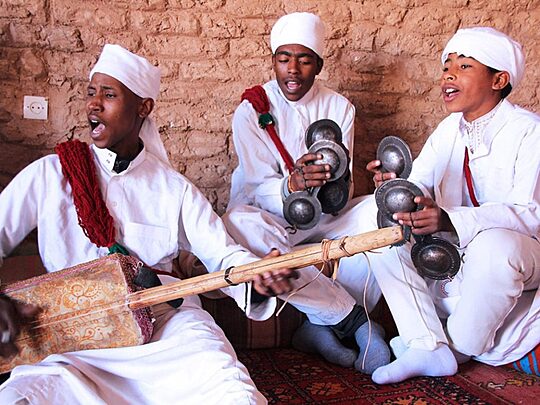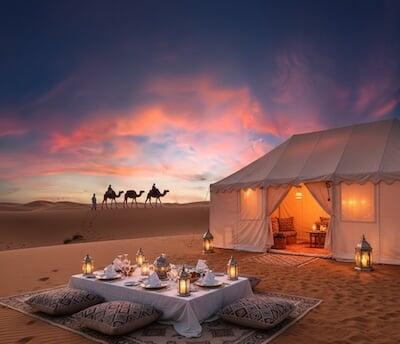Experience Moroccan Culture: Art, Cuisine, Music & Craftsmanship with Gateway2Morocco Tours
Discovering Morocco: A Cultural Journey
Welcome to Magical Morocco Morocco is where Africa meets Europe and the Middle East, creating a fascinating blend of cultures that you can experience in every corner of this enchanting country . From bustling medinas to peaceful mountain villages, each destination tells its own unique story.
A Feast for your Senses
The Art of Moroccan Cuisine Moroccan food isn't just about eating – it's about celebrating life! Here's what makes it special:
- Rich Heritage: The cuisine blends Berber, Arab-Andalusian, and Jewish influences to create unique flavors
Famous Dishes
- Couscous: The national dish
- Tagine: Slow-cooked savory stews
- Pastilla: Delicate sweet-savory pie
- Mint Tea: The symbol of Moroccan hospitality
Cultural Highlights
Cities That Inspire
- Marrakech: Famous for its vibrant souks and historic medina
- Fes: Home to the world's oldest university and traditional craftsmen
- Casablanca: Modern Morocco meets traditional architecture
Best way to Experience Morocco
- Explore the local markets (souks)
- Share a meal with locals
- Visit both famous sites and hidden gems
- Learn basic Arabic phrases (see our language guide above!)
Modern Meet the Traditional
Today's Morocco While preserving its rich traditions, Morocco embraces modern influences:
- Traditional recipes are being reimagined by innovative chefs
- Ancient crafts are finding new expressions in contemporary art
- Historic riads (traditional houses) are transformed into luxury accommodations
Morocco is a vibrant country that offers "a unique blend of stunning contrasts, rich culture, and vibrant history" . Whether you're wandering through ancient medinas or sipping mint tea in a modern café, Morocco promises an unforgettable journey through time and tradition.
Moroccan Cultures
Moroccan Cultures
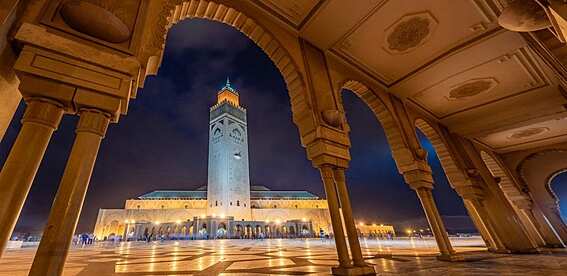
Moroccan culture and arts reflect a fusion of influences that range from North African, Mediterranean, and French colonial to pan-African, Indian, contemporary Italian, and Swedish design. This blend has created a living style that is globally resonant and distinctly local. Today, Morocco's new approach to architecture combines craftsmanship, interior design, and cuisine in what we at Gateway2Morocco term “An Architectural Revolution.”
Berber Influence in Morocco's Culture and Architecture
The influence of the Berbers represents the oldest cornerstone of Morocco's art and culture. Living in deserts and mountains since prehistoric times, Berbers have built unique Kasbahs and crafts. These red-earth castles controlled the Sahara desert and Atlas Mountains' caravan routes, featuring colorful carpets and carved doors with geometric patterns.
Arab Influence and Islamic Stronghold in Morocco
Creators of the new Moroccan Arts find inspiration in traditional Berber building materials. The Arab armies of the seventh century AD laid the second cornerstone of Moroccan style. They introduced a new design language and religion, marked by geometric shapes, abstracted plant forms, and arabesque calligraphy. The Arabs also brought a Persian palette of blue and white with their ceramics, establishing the Islamic stronghold of el Andalus, which set the third cornerstone of the new Moroccan style.
Andalusian Culture and Roman Architectural Forms in Morocco
Andalusian culture represents a marriage of Arab, Berber, and Hispano-Roman influences. Roman architectural forms like columns and loggia combined with Arab-inspired decoration, including zellij and tagguebbast, gained prominence. The French protectorate era (1912 to 1956) added art deco style, often incorporating decorative elements borrowed from Morocco.
Modern Moroccan Style Revolution
During recent decades, King Hassan II and King Mohammed VI have preserved Morocco's architectural heritage. They encouraged restoration and transformation of significant palaces and private homes into guesthouses, hotels, and restaurants, setting the stage for Morocco's contemporary-style revolution.
Discover Morocco with Gateway2Morocco
A visit to Morocco today with Gateway2Morocco allows travelers to explore the living legacy of these historical influences. From the cosmopolitan cities of Marrakech, Rabat, and Casablanca to the ancient city of Fez, coastal town of Essaouira, or the mysterious Routes des Kasbahs in the Atlas mountains, Morocco offers grand hotels blending art deco style with Moroccan elegance. Intimate Riads reveal a blend of traditional domestic architecture with contemporary interior designs.
Experience Moroccan Hospitality
The highpoint of a visit to a Riad may be a traditional Moroccan breakfast on a rooftop terrace overlooking the Mazelike streets of Fez or the peaks of the Atlas outside Marrakesh. With Gateway2Morocco, explore the finest of Morocco's cultural heritage and architecture through our custom private Morocco tours, tailor-made to your interests.
By utilizing specific keywords and breaking down the content into sections, this optimized version will likely perform better in search engines. It ensures that readers interested in Morocco's rich culture, art, and architecture find the content engaging, informative, and aligned with Gateway2Morocco's expertise in crafting unparalleled Moroccan tour experiences.
Moroccan cuisine
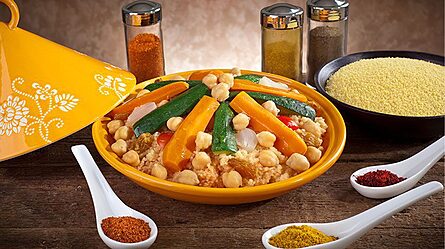
Moroccan Couscous
Moroccan Couscous
Couscous is perhaps the most iconic Moroccan dish, a delightful blend of coarse semolina, steamed to perfection with vegetables and exotic spices, and traditionally served with succulent lamb or chicken. As a quintessential part of Moroccan cuisine, couscous is more than a meal; it's an experience often reserved for special occasions in local households.
While couscous may not be a common dish found on restaurant menus in Morocco, it remains a cherished food that locals savor on special days. For those seeking the most authentic couscous experience, partaking in a Moroccan household meal provides an unparalleled taste sensation.
However, if you wish to indulge in this Moroccan culinary masterpiece at a restaurant, remember to order it a few hours in advance. As experts in crafting tailor-made Moroccan tours, Gateway2Morocco can guide you to the best culinary experiences in the country, ensuring you don't miss out on this delectable dish or other unique tastes of Morocco.
With these considerations, you can connect with the rich flavors and traditions of Moroccan culture, whether you're planning a cultural tour, culinary exploration, or private custom trip through Morocco.
Moroccan Tajine
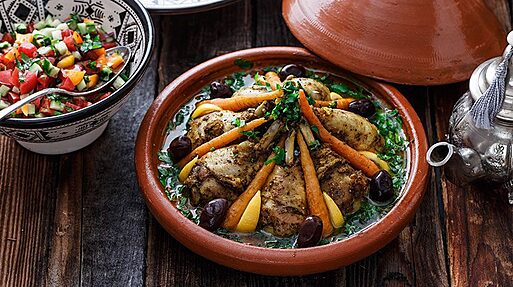
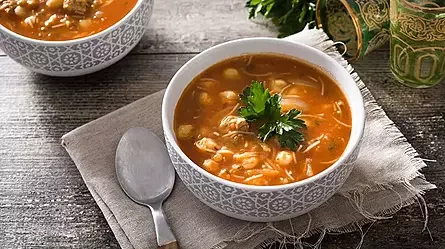
Moroccan Harrira ( Soup)
One can savor a delightful Moroccan soup known as Harira, a blend of tomatoes, chickpeas, lentils, onions, and a special medley of Moroccan spices. Rich in taste and texture, Harira will undoubtedly become your favorite appetizer during your Morocco tours, leaving a lasting impression on your palate.
Moroccan Starters
Moroccan starters, served at the beginning of meals, vary from one region to another, often consisting of raw or cooked Moroccan salads, Briouates stuffed with chicken or minced meat, Tektouta – a ratatouille of peppers and tomatoes, and the renowned Zaâlouk, an eggplant puree. Each of these starters showcases a unique flavor and color that reflects the local culture.
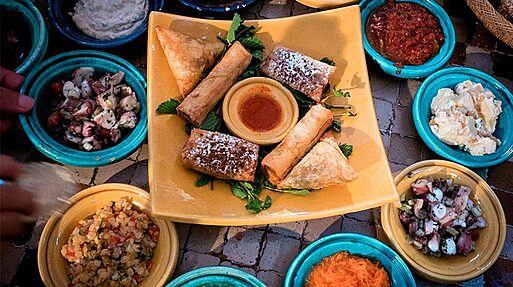
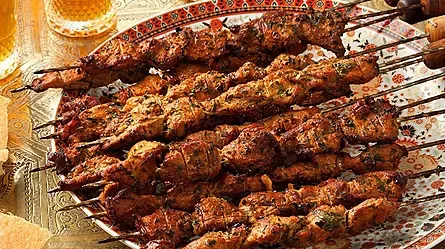
Mechoui
Pastilla
For those with a penchant for sweet and savory delights, the Moroccan pastilla, served in puff pastry form, is filled with delectable choices like fish, chicken, pigeon, or almond. It's a light and subtle pastry that satisfies various tastes.
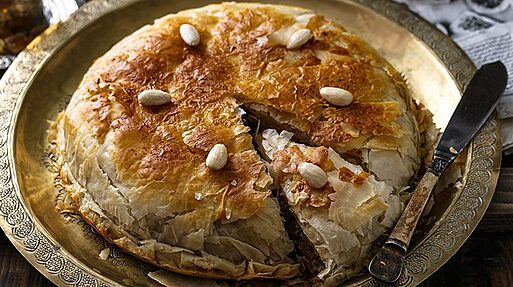
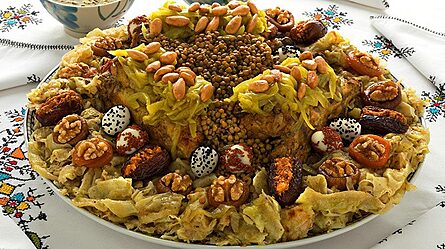
Rfissa
Tanjia
Marrakech's staple dish, Tanjia, prepared traditionally with lamb or veal in a terracotta jar, requires long hours of cooking in a local oven, resulting in tender and flavorsome meat that delights even the most discerning gourmet.
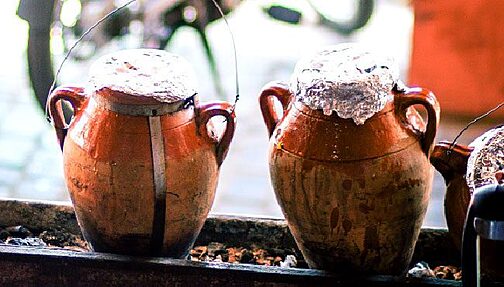
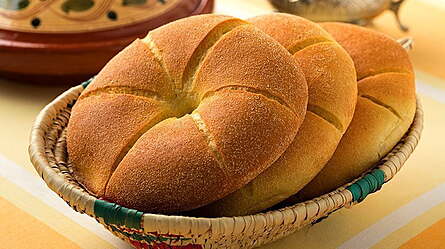
Bread
Chebbakia
Chebakia, the second staple of Morocco and a favorite cake, is traditionally served with Moroccan soup or tea, especially during the sacred month of Ramadan.
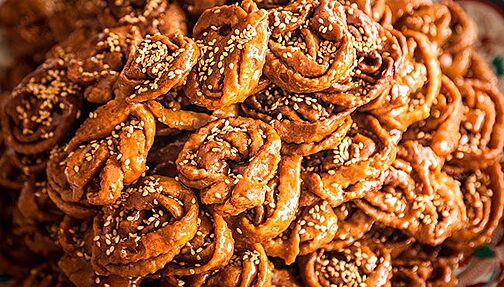
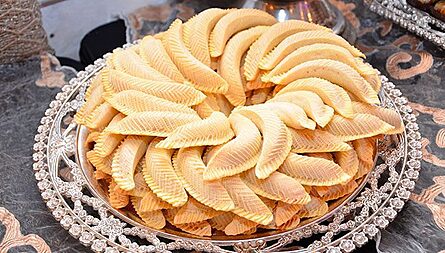
Gazelle Horns ( Kaab El Ghzal )
Ghriba
Experience these and more with Gateway2Morocco, specialists in tailor-made Morocco tours. Explore the rich culinary heritage, from the traditional dishes of the Maghreb to the fragrant oriental cuisine, all available in the bustling medinas and local eateries.
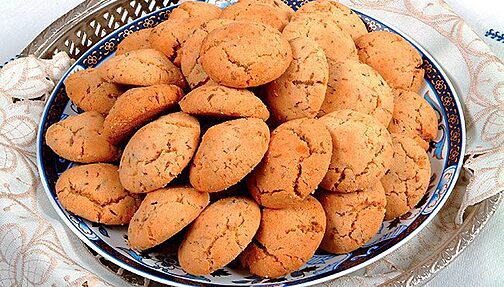
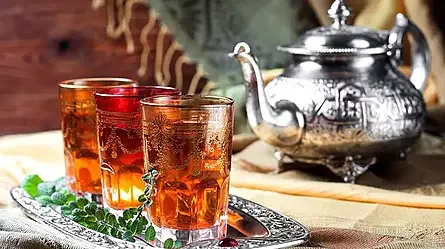
Mint Tea
Fruit Juice
In the heart of Marrakech, the Jemaa-El-Fena square is a must-visit during our Marrakech tours. This vibrant place is home to over twenty vendors offering fresh fruit juices, water, and soda, all organized in picturesque horse-drawn carriages. Customize your beverage according to your taste and enjoy a refreshing respite during your Morocco vacation planning with us.

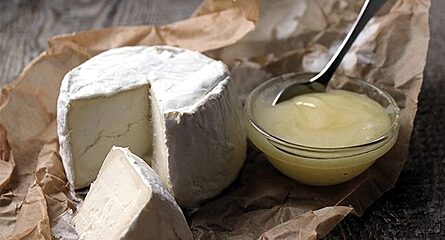
Diary Delights
Moroccan Craftsmanship & Music
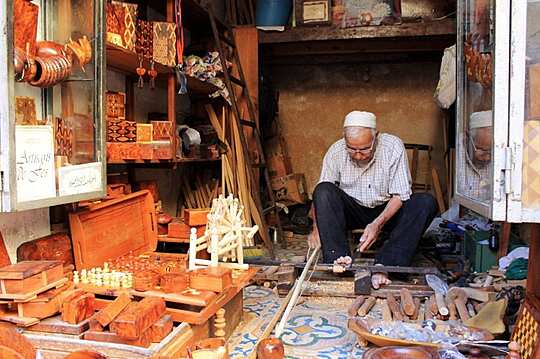
Moroccan Wood artist in Fez
With a rich cultural heritage dating back thirty centuries, Morocco's art and craftsmanship reflect the intricate imprints left by the Romans, Berbers, and Arab civilizations. Moroccan artists from across the kingdom have refined their creative endeavors, producing endless variations of abstract and geometric motifs. This exquisite Moroccan craftsmanship is beautifully evident in hand-woven rugs, ceramics, engraved jewelry, and metalwork. Highly regarded by both tourists and natives, the decorative henna tattoos often showcase motifs from these historical sources.
The extraordinary craftsmanship of the Touareg, for instance, holds a vital place in rituals and ceremonies, acting as safeguards against evil or disease, and serving as a means to honor ancestors or gods. These remarkable adornments tell stories of values, beliefs, achievements, and status.
Embark on an insider’s tour of the souks, or craftsmen’s markets, in Morocco, where you'll witness the timeless appeal and adaptability of the materials, methods, and visual language of the country’s crafts. Turned, carved, and inlaid wood; pierced, twisted, and forged metal; glazed ceramics; hand-woven and dyed textiles; bold jewelry of silver and semi-precious stones – in the hands of master craftsmen and women, these materials are transformed into traditional patterns or contemporary styles, unlike those found elsewhere in the world.
Gnawa in Khmalia Village - Merzouga
Music in Morocco is an integral aspect of daily life. The traditional form of Arabic music, or Andalous, is performed using lutes, mandolins, and flutes, often accompanied by a singer. Popular Berber music, characterized by ancestral rhythmic sounds of tambourines, complements dancers and singers. Andalusi, a living remnant of the Spanish-Maghreban civilization, encapsulates a broad repertoire of songs and instrumental music, preserved through a robust oral tradition.
Whether it's Morocco's art, culture, or music, the country offers a captivating experience, making Moroccan tours with Gateway2Morocco a favorite among travelers seeking an authentic exploration of this unique destination.
